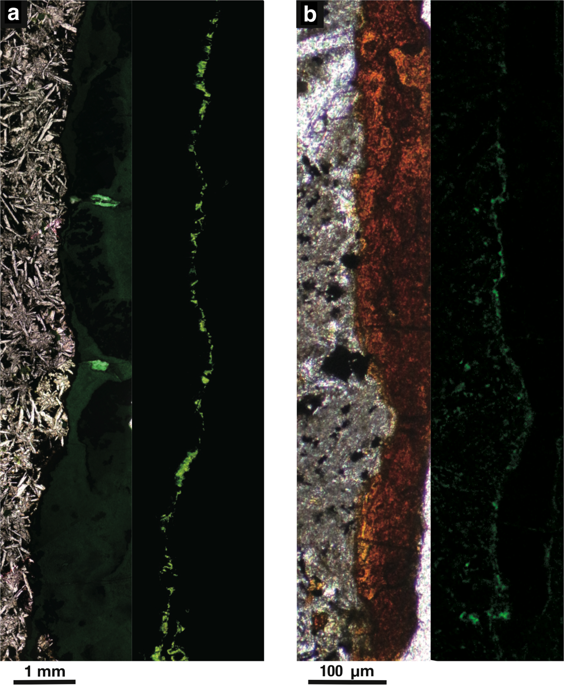Communications Biology ( IF 5.9 ) Pub Date : 2020-04-02 , DOI: 10.1038/s42003-020-0860-1 Yohey Suzuki , Seiya Yamashita , Mariko Kouduka , Yutaro Ao , Hiroki Mukai , Satoshi Mitsunobu , Hiroyuki Kagi , Steven D’Hondt , Fumio Inagaki , Yuki Morono , Tatsuhiko Hoshino , Naotaka Tomioka , Motoo Ito

|
The upper oceanic crust is mainly composed of basaltic lava that constitutes one of the largest habitable zones on Earth. However, the nature of deep microbial life in oceanic crust remains poorly understood, especially where old cold basaltic rock interacts with seawater beneath sediment. Here we show that microbial cells are densely concentrated in Fe-rich smectite on fracture surfaces and veins in 33.5- and 104-million-year-old (Ma) subseafloor basaltic rock. The Fe-rich smectite is locally enriched in organic carbon. Nanoscale solid characterizations reveal the organic carbon to be microbial cells within the Fe-rich smectite, with cell densities locally exceeding 1010 cells/cm3. Dominance of heterotrophic bacteria indicated by analyses of DNA sequences and lipids supports the importance of organic matter as carbon and energy sources in subseafloor basalt. Given the prominence of basaltic lava on Earth and Mars, microbial life could be habitable where subsurface basaltic rocks interact with liquid water.
中文翻译:

在33.5–1.04亿年历史的洋壳中玄武岩界面处的深层微生物扩散
上层洋壳主要由玄武岩熔岩组成,是地球上最大的可居住区之一。然而,人们对洋壳深层微生物生命的本质了解甚少,尤其是在古老的冷玄武岩与沉积物下方的海水相互作用的地方。在这里,我们显示出微生物细胞密集地集中在33.5岁和1.04亿岁(Ma)的海底玄武岩的裂缝表面和矿脉中的富铁蒙脱石中。富铁蒙脱石局部富集有机碳。纳米级固体表征揭示了富含碳的蒙脱石中的有机碳是微生物细胞,其细胞密度局部超过10 10个细胞/ cm 3。。DNA序列和脂质的分析表明,异养细菌的优势地位支持了海底玄武岩中有机物作为碳和能源的重要性。考虑到玄武岩熔岩在地球和火星上的突出地位,在地下玄武岩与液态水相互作用的地方,微生物生活可能是宜居的。



























 京公网安备 11010802027423号
京公网安备 11010802027423号